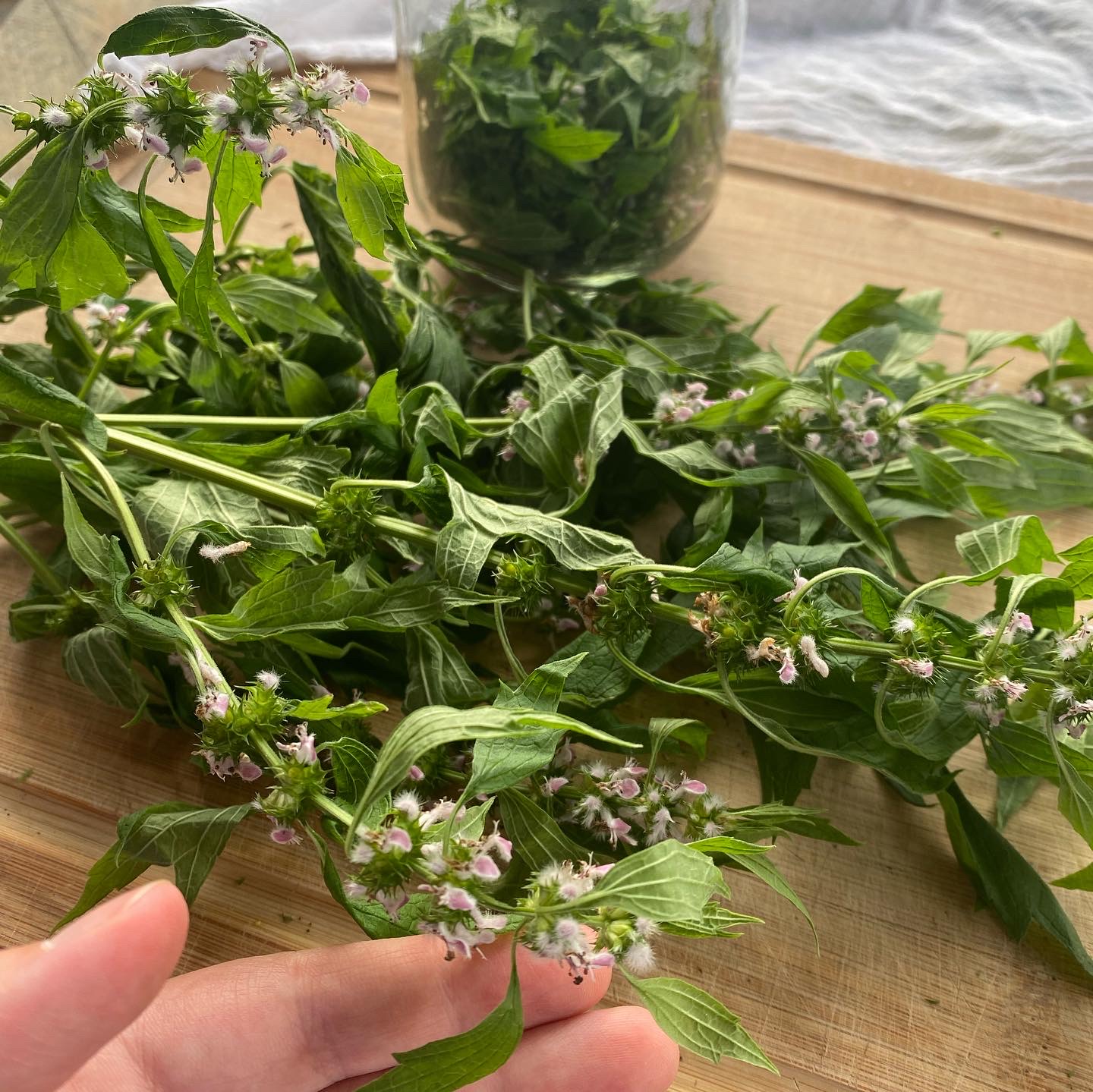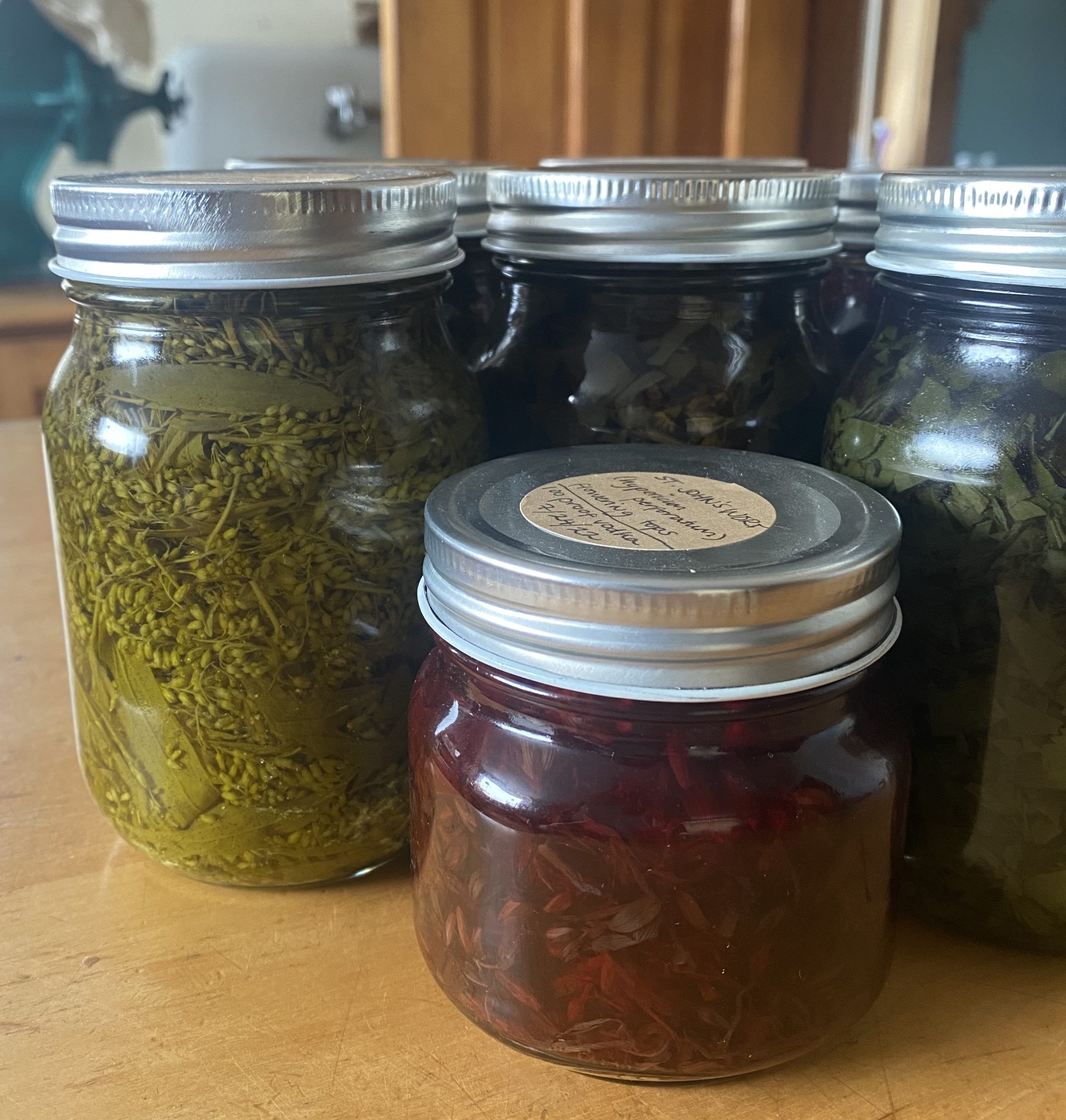This week, one of my to-do list items is to strain and bottle the various tinctures I started over the summer and fall months. Echinacea, motherwort, valerian, nettle, hawthorn, goldenrod, lemon balm, St. Johns wort — the list is long! These lovely little herbal extracts are an easy way to use herbal medicine on a regular basis. They’re easy and satisfying to make, and crafting them gives me a sense of deep connection to the land I live on. But before I go any further, you may be asking… what is a tincture?
Tincture Definition
A tincture is a liquid, concentrated herbal preparation made by soaking herbs in alcohol to extract their medicinal consituents. Their highly concentrated nature means you need only a few drops to get the same herbal dosage as a whole cup of herbal tea. And because of alcohol’s preservative qualities, tinctures can be stored for years without spoiling or losing potency. Both these qualites make them a convenient option for taking herbal medicine.

The basic method for making a tincture is therefore quite simple. However, a lot can vary depending on the specific herb and whether the plant material is fresh or dried. Some plant constituents are more soluble in alcohol than water, and vice versa. Professional herbalists often start with a 190 proof (95% ABV) highly concentrated alcohol and then dilute to the exact potency recommended for a particular herb. Herbalists using the “folk method” may use 80-100 proof (or 40-50% ABV) as standard for most herbs. Fresh herbs may also require a higher concentration of alcohol to account for their higher water content as compared to dried herbs.
Alternatives to alcohol-based tinctures
For those who need a non-alcoholic tincture, there are also glycerites (which use glycerin in place of alcohol) and oxymels (which use vinegar to extract the herb, with raw honey added after infusion). You can also infuse herbs in oil, take them as tea, or use them in your regular cooking.
I hope this post gave you some interesting insights into tinctures! If you’d like to try making your own, I will share a simple folk method that I use for making tinctures in another post soon. You can also purchase them ready-made from local herbalists or farmers markets.

Disclaimer: The information presented here is for entertainment and informational purposes only. It is not a substitute for qualified medical advice. Some herbs may interact with certain medications or are contraindicated in the presence of certain health conditions. Please research thoughtfully from credible sources. Consult a qualified herbalist or medical professional before embarking on any herbal regimen.
Always be 100% sure of plant ID from multiple sources before ingesting foraged herbs. If harvesting your own herbs, abide by ethical harvesting practices. Seek out well-established stands, ask permission, and don’t take more than you need and can process right away. Never take more than 1/3 of an established patch. Never wildharvest herbs that are at-risk or endangered; seek out cultivated options or substitute herbs instead. Consult the United Plant Savers website for an up-to-date list of at-risk and endangered plants.